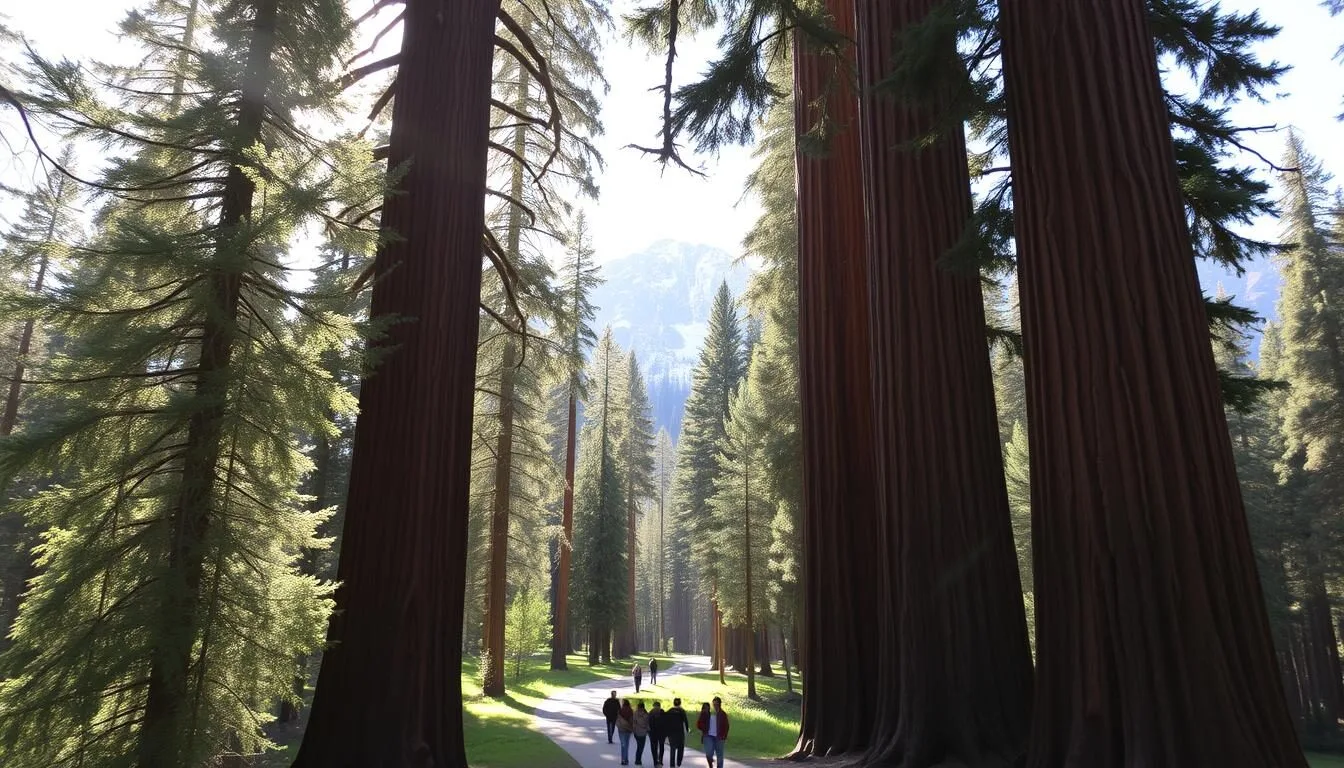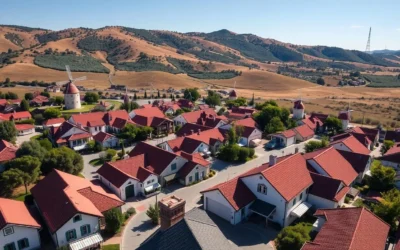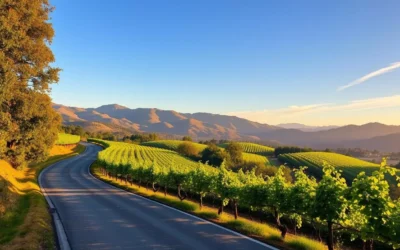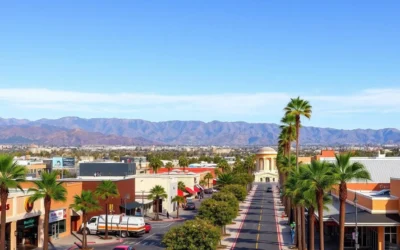Nestled in the Sierra Nevada mountains, Sequoia National Park is home to some of the world’s most magnificent natural wonders. Established in 1890, it’s the second oldest national park in the United States, dedicated to preserving the giant sequoias, the largest trees on Earth by volume.
As you explore this incredible landscape, you’ll discover a diverse range of experiences. From the awe-inspiring giant sequoias to stunning mountain vistas, crystal-clear rivers, and underground caves, Sequoia National Park offers something for everyone. Whether you’re planning a day trip or an extended stay, this guide will help you make the most of your visit to this remarkable national park.
You’ll uncover iconic landmarks like the General Sherman Tree, as well as lesser-known gems, and get practical tips for planning your trip.
Discovering the Land of Giants
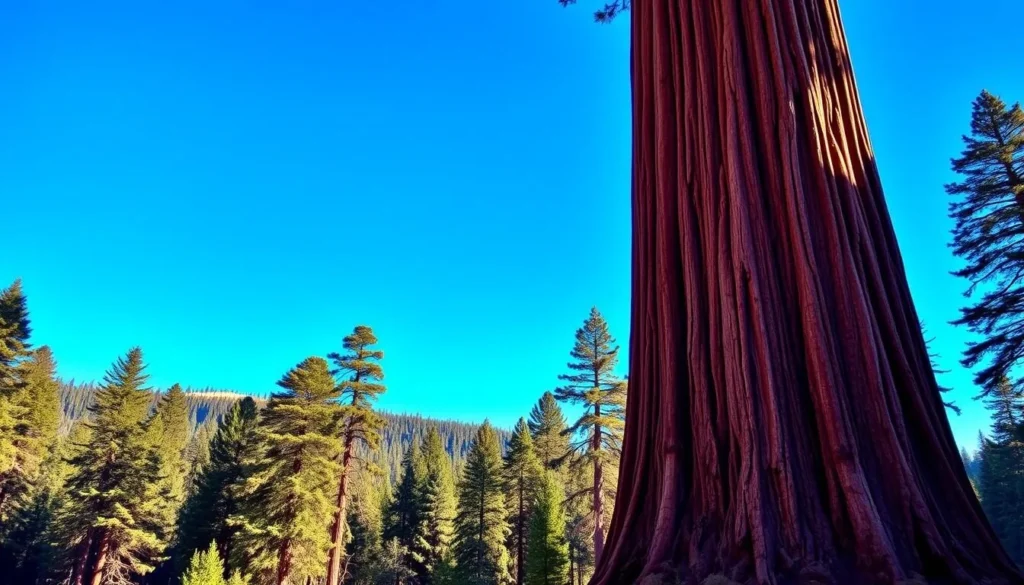
The Giant Sequoias of Sequoia National Park are a natural wonder that inspires awe in all who visit. These trees are part of the Redwood family, which includes the Coast Redwoods, known for being the tallest trees, and the Dawn Redwoods, which are the smallest. What makes Giant Sequoias unique is their immense size and age; they can live for thousands of years and grow to be some of the largest trees on Earth.
Sequoia National Park provides a special ecosystem that allows these giants to thrive. The Giant Sequoias are found at elevations between 4,000-8,000 feet, where the climate and soil conditions are just right. While Coast Redwoods are taller, Giant Sequoias have much thicker trunks and greater volume, making them a marvel of nature.
Visitors to the park are often struck by the sense of awe and perspective that comes from standing beside these massive trees. The experience is humbling, as these living organisms have witnessed centuries of history. Sequoia National Park protects roughly one-third of all naturally occurring sequoias in the world, making it a crucial conservation area for these magnificent trees.
Whether you’re taking a leisurely walk in the Giant Forest or planning to hike through the high Sierras, Sequoia National Park offers an unforgettable experience. The park is a testament to the beauty and wonder of the natural world, and a visit here is sure to leave a lasting impression.
Planning Your Visit to Sequoia National Park
As you prepare for your trip to Sequoia National Park, understanding the best times to visit and plan your itinerary is crucial. With its vast natural beauty and diverse activities, Sequoia National Park is a destination that attracts many visitors each year.
Best Time to Visit Sequoia National Park
The best time to visit Sequoia National Park largely depends on your preferences and what you want to do. May is an excellent month for frontcountry hikes with fewer crowds than the peak summer months. If you’re planning to venture into the backcountry, July through September are the ideal months. These periods offer the most favorable conditions for exploring the park’s vast wilderness.
Park Entrance Fees and Passes
Before entering Sequoia National Park, it’s essential to understand the entrance fees. The cost is $35 per vehicle for a 7-day pass, which also grants access to Kings Canyon National Park. Alternatively, you can use the America the Beautiful pass for free entry. It’s worth noting that while reservations are not required for general entry, permits are necessary for backcountry hiking and summiting Mount Whitney.
Getting Around the Park
Once inside the park, getting around can be straightforward. During peak season, a park shuttle system operates, making it easier to navigate the park without your vehicle. However, be aware that certain roads have vehicle size restrictions, so it’s a good idea to check the park’s guidelines before your visit. Planning your day and using the shuttle can help you make the most of your time in the park.

By planning your visit carefully, you can ensure a memorable and enjoyable experience at Sequoia National Park. Whether you’re spending 1-2 days exploring the frontcountry or venturing into the backcountry, the park has something to offer for everyone.
The General Sherman Tree: World’s Largest Living Tree
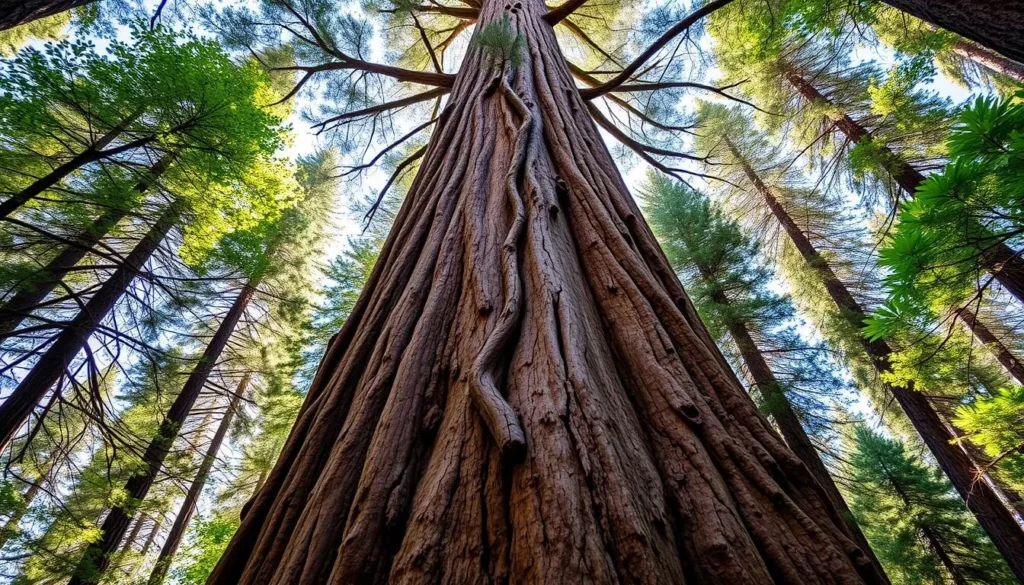
Sequoia National Park’s crown jewel is undoubtedly the General Sherman Tree, a natural giant that fascinates all who visit. This tree is recognized as the largest tree in the world by volume, standing tall at 274.9 feet with a ground circumference of 102.6 feet and a total volume of 52,508 cubic feet.
While there are taller and wider trees elsewhere, the General Sherman Tree contains more wood volume than any other tree on Earth, making it a unique wonder. Visitors can access this marvel through a short, downhill walk from a large parking area, allowing for an easy visit.
Accessing the General Sherman Tree
The General Sherman Tree is easily accessible via the Congress Trail, a 1-mile round-trip path that includes a gentle downhill walk to the tree and an uphill return. For visitors with mobility challenges, an accessible trail option is available, ensuring that everyone can experience the grandeur of this natural wonder.
Avoiding Crowds
To make the most of your visit and avoid the crowds, especially during peak summer months, plan your trip for early morning or late afternoon. These times not only offer a more serene experience but also provide softer, more golden light for photography.
Photography Tips
Capturing the scale and beauty of the General Sherman Tree requires some thought. Consider shooting from different angles to convey its massive size. The soft light of early morning or late afternoon is ideal for highlighting the tree’s textures and colors. Don’t forget to include people or objects in your photos to provide a sense of scale.
While the General Sherman Tree is a must-see, the surrounding Congress Trail offers additional opportunities to explore other impressive sequoias, making for a more complete and enriching experience in the Giant Forest of Sequoia National Park.
Exploring the Giant Forest and Congress Trail

You’ll be awestruck by the sheer scale and beauty of the Giant Forest’s giant sequoias. The Giant Forest is home to five of the ten largest trees in the world, making it an essential area to explore beyond just the General Sherman Tree. As you wander through this incredible forest, you’ll discover a diverse range of giant sequoias, each with its unique character.
Notable Trees Along the Congress Trail
The Congress Trail is a 2.9-mile paved loop that takes you through magnificent groves of giant sequoias, including notable trees like the President, Chief Sequoyah, and the Senate and House groups. These trees are not only impressive in size but also have fascinating stories behind them. Take your time to appreciate the intricate details of these natural wonders.
Trail Difficulty and Accessibility
The Congress Trail is a relatively flat, paved path suitable for most fitness levels. It’s also partially accessible for wheelchairs and strollers, making it an ideal destination for families and visitors with mobility limitations. You can easily spend 2-3 hours exploring the trail and taking in the breathtaking views.
Wildlife Spotting Opportunities
As you hike along the Congress Trail, keep an eye out for the diverse wildlife that calls the Giant Forest home. You may spot mule deer grazing in the underbrush, various bird species flitting through the trees, or even black bears in the distance (from a safe vantage point, of course). The trail offers a unique opportunity to connect with nature and observe these amazing creatures in their natural habitat.
In conclusion, the Giant Forest and Congress Trail offer an unforgettable experience in Sequoia National Park. With its stunning groves of giant sequoias, diverse wildlife, and accessible trail, it’s a must-visit destination for anyone looking to connect with nature.
Climbing Moro Rock for Panoramic Views
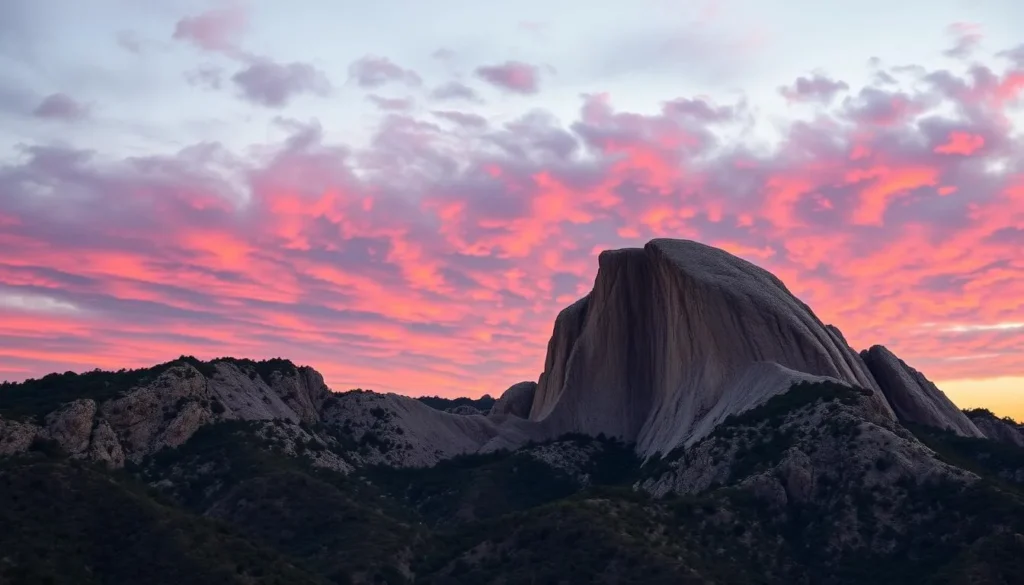
For those seeking adventure, climbing Moro Rock is an unforgettable experience. Moro Rock is a granite dome that offers spectacular 360-degree views of the Great Western Divide and the Sierra Nevada Mountains. It’s one of the most fun hiking trails in the National Park System and a must-do activity in Sequoia National Park.
The Climb Experience
The climb to the top of Moro Rock is an exhilarating experience. The path includes a stone stairway carved directly into the granite walls, leading to the summit at 6,725 feet. This 0.5-mile round-trip hike is unique due to its 400 steps, making it feel like a true adventure as you ascend.
Be prepared for a thrilling ascent that is both challenging and rewarding. The climb is considered moderate, making it accessible to most visitors, but it’s essential to be mindful of your physical limitations.
Sunset Views from Moro Rock
Visiting Moro Rock at sunset is a magical experience. The fading light creates dramatic shadows and paints the distant peaks with golden and pink alpenglow, making for an unforgettable photography opportunity. The views from the top are breathtaking, with the Sierra Nevada Mountains stretching out as far as the eye can see.
Witnessing the sunset from Moro Rock is truly a highlight of any visit to Sequoia National Park. Be sure to bring your camera to capture the moment.
Safety Tips for Families with Children
When climbing Moro Rock with family, it’s crucial to prioritize safety. Hold hands on narrow sections, stay on designated paths, and avoid the climb during thunderstorms. Bringing water and wearing appropriate footwear are also essential precautions.
Safety first ensures that your visit to Moro Rock is enjoyable for everyone. Be mindful of your surroundings and keep children close.
Driving Through Tunnel Log
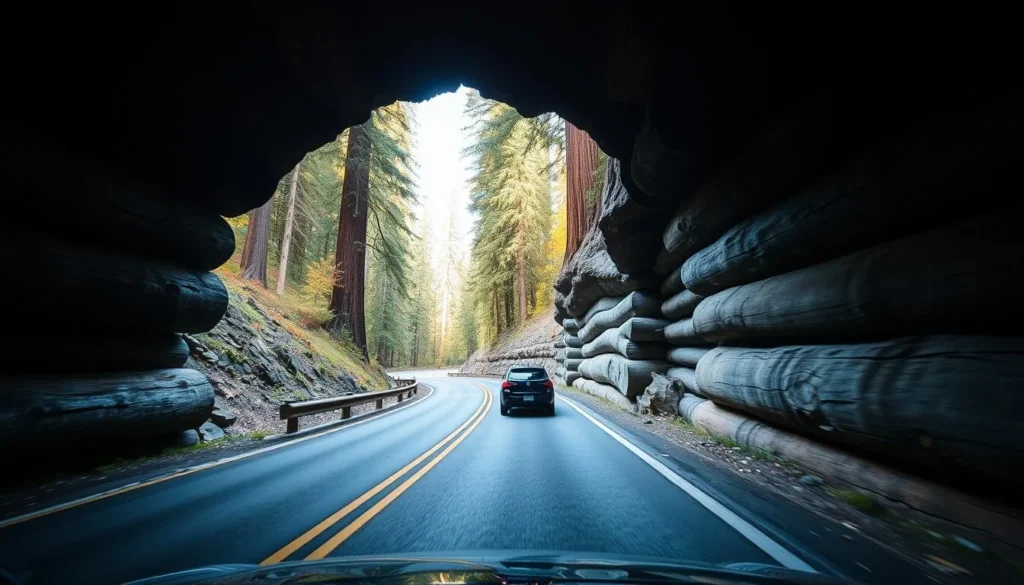
Visitors to Sequoia National Park can drive through the historic Tunnel Log, a giant sequoia that fell in 1937 across the road. The following year, a 17-foot wide by 8-foot tall tunnel was carved through it, creating this unique attraction.
Size Matters: Vehicle Restrictions
The Tunnel Log has specific vehicle size restrictions. Larger vehicles, such as RVs and buses, cannot fit through the tunnel due to its 8-foot height limit. If you’re driving a larger vehicle, don’t worry; there’s an alternative route available.
Alternatives for Larger Vehicles
For those driving larger vehicles, a bypass road is available, ensuring that everyone can enjoy the Tunnel Log area without the constraint of size restrictions.
Capturing the Moment: Best Photo Opportunities
For the best photographs, visit the Tunnel Log during the early morning or late evening to avoid crowds. Experiment with different angles and compositions to capture the essence of this natural wonder. Even if you’re not driving through, you can park nearby and walk to the Tunnel Log, making it accessible to everyone.
Exploring Crystal Cave’s Underground Wonders
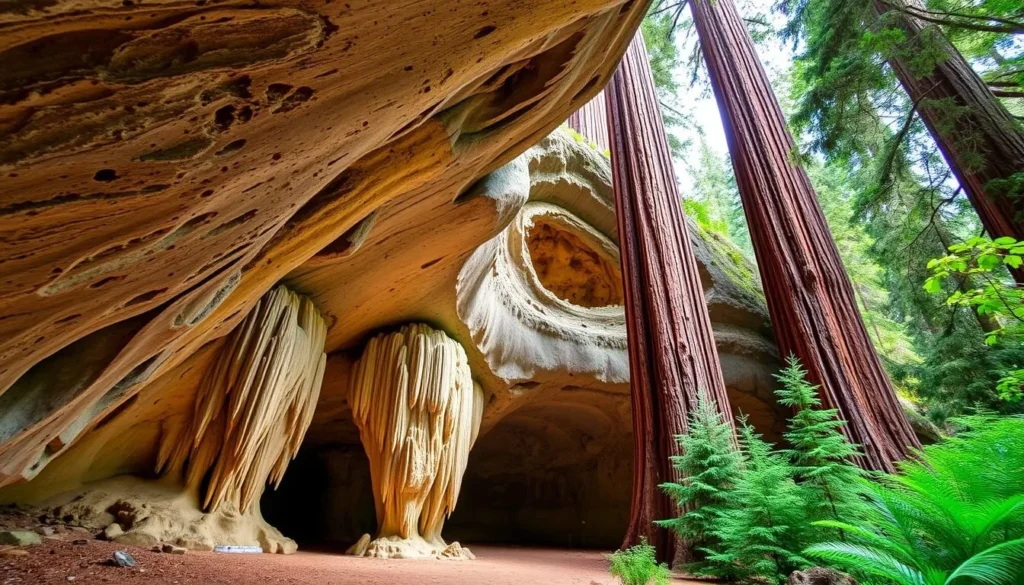
Crystal Cave, a stunning marble cavern within Sequoia National Park, offers an unforgettable adventure. This natural wonder is part of the 275 caves found in Sequoia and Kings Canyon National Parks, but it’s the only one accessible to the public.
Tour Options and Reservations
The only way to visit Crystal Cave is on a guided tour. In 2025, tours will be offered every 30 minutes from 9 AM-3 PM between May 23, 2025-September 7, 2025. The tour is 50 minutes long and includes a 0.5-mile round-trip hike, plus stairs and steep terrain. It’s essential to book your tickets in advance through the Sequoia Parks Conservancy, as dates can sell out quickly.
What to Expect Inside the Cave
Inside Crystal Cave, you’ll experience a constant 50°F temperature, making it a refreshing escape from the outside heat. The 0.5-mile walking distance within the cave is accompanied by illuminated formations and knowledgeable guides who share insights into the cave’s geology and ecology.
Preparing for the Cave Environment
To make the most of your visit, wear sturdy shoes with good traction, and bring a light jacket even in summer due to the cool temperature inside the cave. While photography is permitted, note that tripods and flash are not allowed. Be prepared for a trail that includes stairs and steep terrain.
Reaching Crystal Cave requires a half-mile hike from the parking area, and vehicles over 22 feet are not permitted on the narrow access road. Plan your visit between late May and September for the best experience.
Hiking the Scenic Trails of Sequoia National Park
From gentle, interpretive walks to strenuous alpine adventures, Sequoia National Park’s trails provide something for every kind of hiker. Whether you’re looking for a leisurely day hike or a more challenging multi-day trek, the park’s diverse landscapes offer a range of experiences that cater to different interests and abilities.
Tokopah Falls Trail
The Tokopah Falls Trail is a moderate 4-mile round-trip hike that follows the Marble Fork of the Kaweah River to the stunning 1,200-foot Tokopah Falls. This trail is particularly beautiful in spring and early summer when the waterfall is at its peak flow. The hike is considered moderate due to its gradual incline and the need to cross the river in some areas.
Trail Highlights: Scenic river views, 1,200-foot waterfall
Big Trees Trail
The Big Trees Trail is an ideal introduction to sequoia ecology, featuring a gentle, 1.4-mile loop around Round Meadow. This accessible boardwalk trail is equipped with interpretive signs that explain why giant sequoias thrive in this specific environment, making it a must-visit for first-time visitors to the park.
Trail Features: Gentle loop, interpretive signs, Round Meadow
Crescent Meadow Loop
The Crescent Meadow Loop is a beautiful, relatively flat 1.8-mile trail that John Muir referred to as “the gem of the Sierra.” This easy, kid-friendly hike offers the chance to see Tharp’s Log, a cabin built inside a fallen sequoia, and provides excellent opportunities for wildlife viewing, especially during early morning and late evening hours.
Trail Attractions: Tharp’s Log, wildlife viewing, scenic meadow
Lakes Trail for Alpine Views
For more experienced hikers, the Lakes Trail offers a challenging 12-mile round-trip journey to Pear Lake, featuring four pristine mountain lakes (Heather, Aster, Emerald, and Pear) nestled among granite peaks at elevations over 9,000 feet. This trail is best undertaken in late summer when the alpine scenery is at its most breathtaking.
Trail Highlights: Four mountain lakes, alpine scenery, granite peaks
| Trail Name | Distance | Difficulty | Highlights |
|---|---|---|---|
| Tokopah Falls Trail | 4 miles round trip | Moderate | 1,200-foot waterfall, river views |
| Big Trees Trail | 1.4 miles loop | Easy | Sequoia ecology, Round Meadow |
| Crescent Meadow Loop | 1.8 miles loop | Easy | Tharp’s Log, wildlife viewing |
| Lakes Trail | 12 miles round trip | Challenging | Four mountain lakes, alpine scenery |
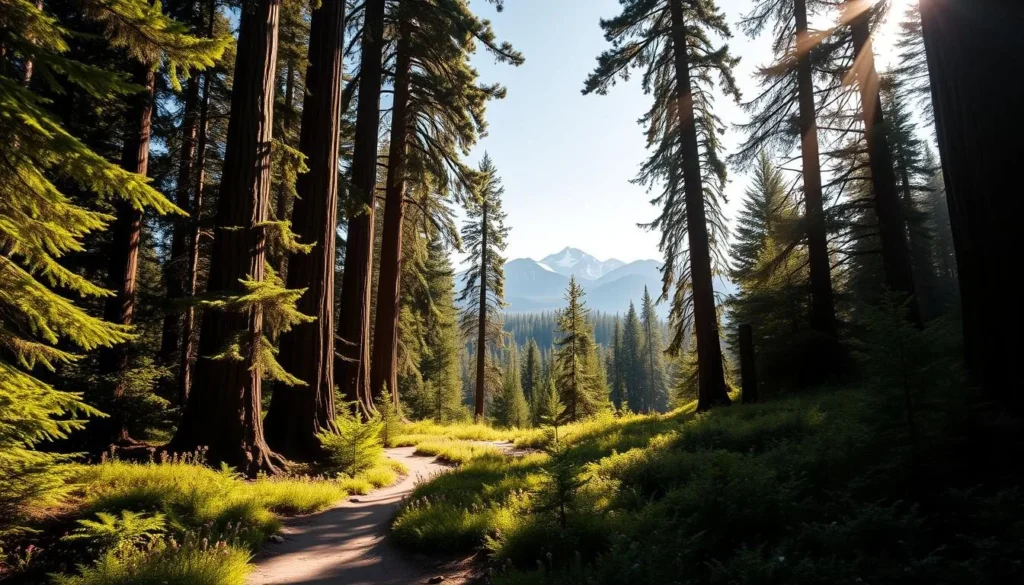
Sequoia National Park, California: Best Things to Do for Families
Sequoia National Park stands out as an ideal destination for family adventures, boasting natural wonders that captivate visitors of all ages and create lasting memories. The park offers a variety of activities and trails that are suitable for families, making it an excellent choice for a vacation.

Kid-Friendly Trails and Activities
The park features several kid-friendly trails that are perfect for family hikes. The Big Trees Trail is a must-visit, offering insights into why sequoias thrive in the Giant Forest. Another favorite is the Crescent Meadow Loop Trail, an easy and engaging day hike around a beautiful meadow. Additionally, the General Sherman Tree Trail is a short, manageable walk that introduces children to the world’s largest living tree.
- The Big Trees Trail is great for learning about sequoias.
- The Crescent Meadow Loop Trail is ideal for spotting wildlife.
- The General Sherman Tree Trail is a short, educational walk.
Junior Ranger Program
The Junior Ranger Program is a fantastic way to engage children with the park’s natural and cultural resources. Kids can earn their badge by completing age-appropriate activity booklets, attending ranger programs, and taking the Junior Ranger pledge to protect the park. This program not only educates children but also instills a sense of responsibility towards preserving national parks.
Wildlife Viewing with Children
Sequoia National Park is home to diverse wildlife, and viewing these animals can be a thrilling experience for children. The best times for wildlife viewing are during the early morning and late evening hours when animals are most active. Meadows like Crescent Meadow are excellent spots for viewing wildlife. It’s essential to teach children about keeping a safe distance from animals and not feeding them, ensuring a safe and enjoyable experience for all.
Families can also participate in ranger-led programs, explore the interactive exhibits at the Giant Forest Museum, and enjoy night sky programs during the summer months, further enhancing their park experience.
Scenic Drives Through the Park
Embark on a scenic drive through Sequoia National Park, where the journey is just as breathtaking as the destination. The park offers several scenic drives that allow you to experience its diverse landscapes from the comfort of your vehicle, making it an ideal option for those with limited mobility or time constraints.
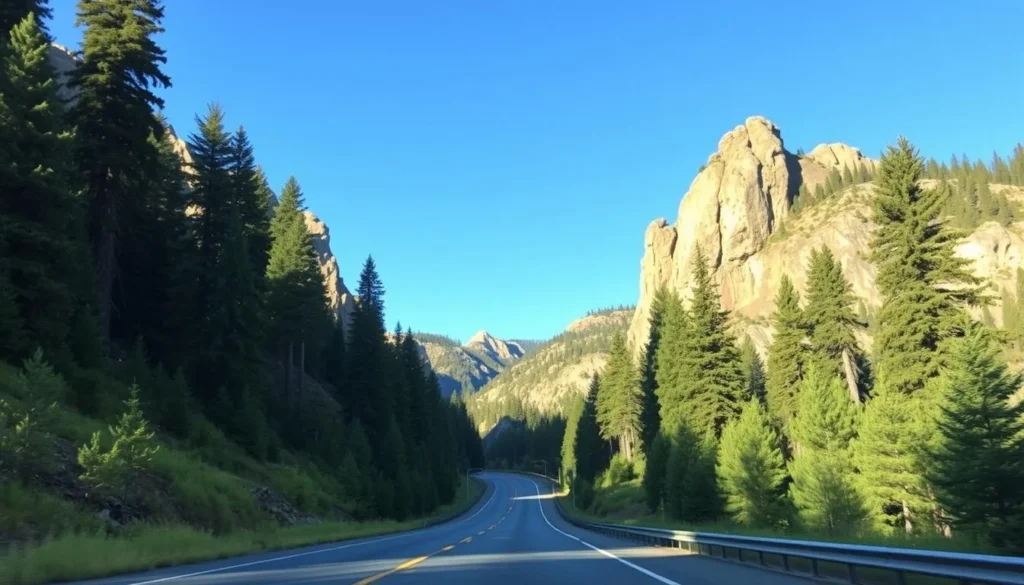
Generals Highway Highlights
The Generals Highway is a 45-mile historic route that connects Sequoia National Park to Kings Canyon National Park. As you drive along this highway, you’ll pass through various ecological zones, with the elevation changing dramatically from 1,400 feet at the Ash Mountain entrance to over 7,200 feet in the sequoia groves. Key stops along the way include Tunnel Rock, Hospital Rock, and the Giant Forest, with numerous scenic viewpoints to take in the mountain scenery.
Kings Canyon Scenic Byway
For an extended driving tour, consider the Kings Canyon Scenic Byway (Highway 180), which takes you from Grant Grove down into Kings Canyon. This route offers breathtaking views of the deep canyon carved by the Kings River, providing a spectacular experience for visitors. Be sure to stop at the various viewpoints and take in the natural beauty of the area.
When driving through Sequoia National Park, be mindful of vehicle length restrictions, seasonal closures, and optimal lighting times for the best views. With its well-maintained roads and stunning scenery, a drive through Sequoia National Park is an unforgettable experience.
Where to Stay In and Around Sequoia National Park
Sequoia National Park offers a range of lodging options, from rustic campgrounds to comfortable lodges, catering to different preferences and budgets. Whether you’re looking for a luxurious stay or an immersive camping experience, you’ll find suitable accommodations in and around the park.
In-Park Lodging Options
The Wuksachi Lodge is a premier year-round accommodation within Sequoia National Park, offering comfortable rooms and suites. This lodge is centrally located, making it an ideal base for exploring the park’s attractions. Amenities include dining options and comfortable lodging, ensuring a relaxing stay.
Campgrounds Within the Park
Sequoia National Park has several campgrounds, including Lodgepole, Dorst Creek, and Potwisha, each offering different elevations and amenities. These campgrounds provide shower facilities and bear boxes, enhancing your camping experience. Reservations are required, and availability varies by season.
Nearby Towns and Accommodations
For those who prefer to stay outside the park, nearby towns like Three Rivers, Visalia, and Fresno offer a range of accommodations, from budget motels to vacation rentals. The Gateway Restaurant & Lodge is a convenient option near the Sequoia entrance, while the Azalea campground in Kings Canyon is another popular choice, located less than an hour from General Sherman.
To ensure a smooth trip, it’s advisable to book your accommodations well in advance, especially during peak summer season. Considering a visit during the shoulder season can also provide greater availability and a more relaxed experience.
Combining Sequoia with Kings Canyon National Park
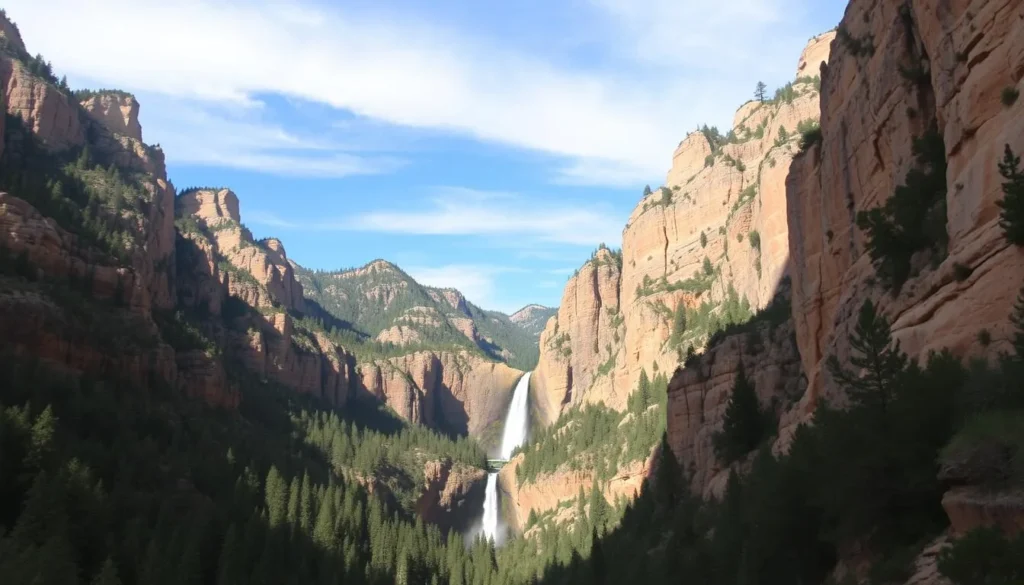
Sequoia and Kings Canyon National Parks are two adjacent national parks that offer a unique and diverse experience when visited together. Since they are managed together and share a single entrance fee, it’s practical and economical to visit both parks in one trip.
Highlights of Kings Canyon
Kings Canyon National Park is home to the world’s second-largest tree, the General Grant Tree, and features one of the deepest canyons in North America. The park offers breathtaking views, a beautiful river, caves, waterfalls, and alpine lakes. Must-visit attractions include Zumwalt Meadow and Roaring River Falls.
The Kings Canyon Scenic Byway is a must-drive route that takes you deep into the canyon, offering dramatic views comparable to Yosemite but with far fewer crowds.
Recommended Multi-Day Itineraries
For a memorable trip, consider a 3-day itinerary that allocates one day to the Grant Grove area, one day to Giant Forest and Moro Rock, and one day to Kings Canyon’s scenic byway and valley floor. This plan allows you to experience the best of both parks.
For accommodations, consider staying at Grant Grove Village or Wuksachi Lodge, which are centrally located and minimize driving time between the parks’ major attractions.
By combining Sequoia and Kings Canyon National Parks into your trip, you’ll experience the diversity and natural beauty that these parks have to offer. With proper planning, you can make the most of your visit and enjoy the unique features of each park.
Conclusion: Making the Most of Your Sequoia Adventure
With its towering trees and diverse landscapes, Sequoia National Park offers an unforgettable adventure. As you explore this incredible national park, you’ll discover a wide range of experiences, from standing beneath the world’s largest trees to hiking trails and exploring underground caves.
To make the most of your trip, it’s essential to plan ahead, especially during summer months when reservations for accommodations and popular activities like Crystal Cave tours are crucial. Remember to practice responsible tourism by storing food properly, staying on designated trails, and following Leave No Trace principles.
Consider visiting during different seasons to experience the park’s varied landscapes: enjoy spring wildflowers, hike high-country trails in summer, witness fall colors, or try winter snow activities. A visit to Sequoia National Park and Kings Canyon National Park is not just about recreation; it’s a chance to connect with nature and gain a new perspective on our place in the world.
